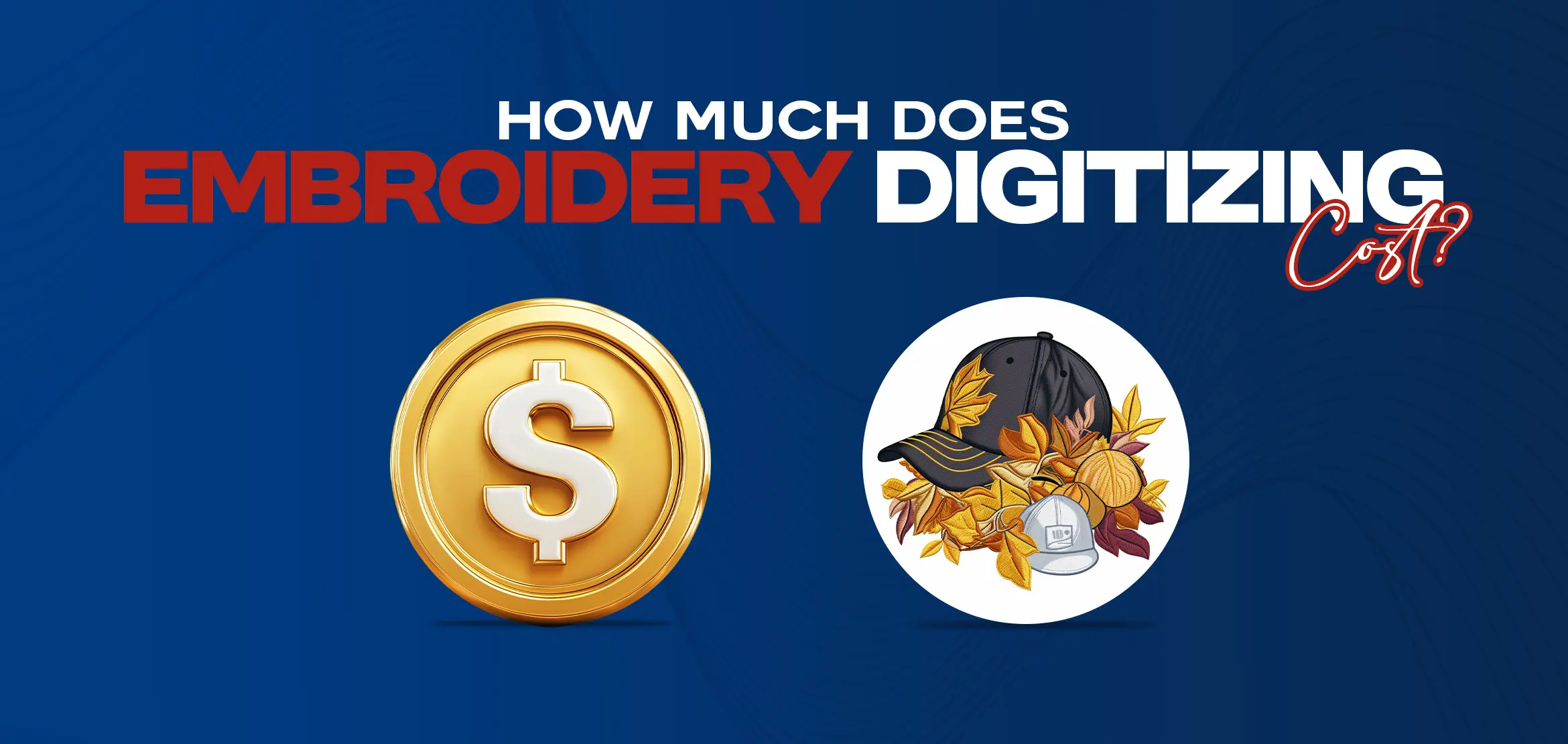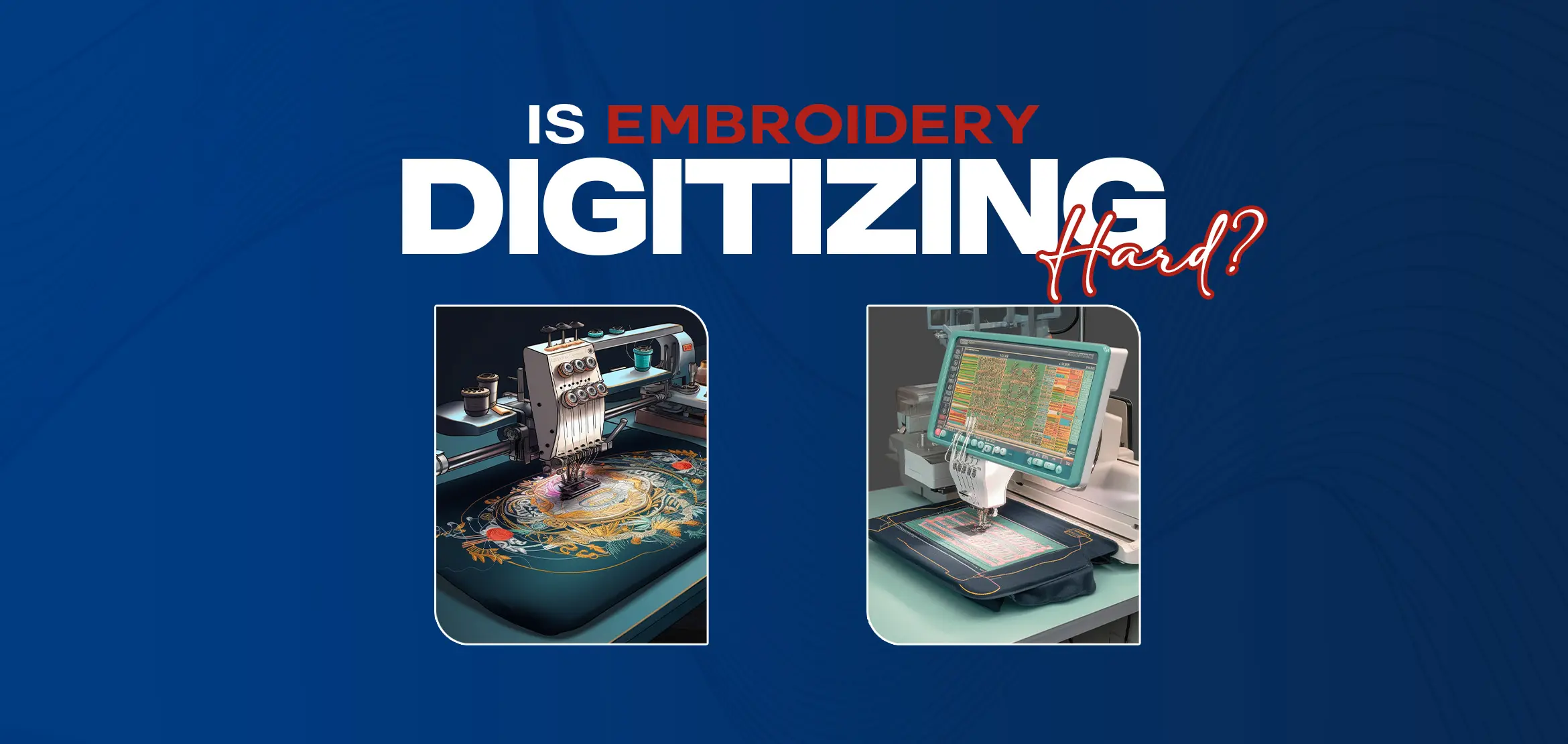
What is Embroidery Digitizing?
Table Of Content
- What are Digitizing Techniques?
- 1; Manual Digitizing Technique
- 2: Punch Digitizing Technique
- 3: Computerized Digitizing Technique
- What is the Digitizing Process?
- Design Analysis
- Artwork Preparation
- Digitizing Software
- Stitch Pathing
- Test Run and Refinement
- What are the Benefits of Digitizing?
- Time and Cost Savings
- Greater Customization and Precision
- Consistency in Design
- Opportunity for Complex Designs
- Ease of Editing
- Top Tools for Digitizing Embroidery Designs
- Embroidery Software
- Digitizing Tablets
- High-Quality Embroidery Machines
- Stabilizers
- Scissors
- Thread
- Conclusion
Embroidery has been around for centuries, and with the advent of technology, it has become more sophisticated. One of the most critical developments in embroidery is digitizing, the process of converting images or designs into stitch files for embroidery machines. digitizing embroidery designs or digitize embroidery designs provides customization, precision, and efficiency in embroidery designs. This post will explore the different types of digitizing, the process, benefits, tips and tricks, and future trends in embroidery digitizing.
What are Digitizing Techniques?
Embroidery digitizing techniques are methods used to convert an image or design into a stitch file for embroidery machines to reproduce on fabric. Three leading embroidery digitizing techniques are manual, punch, and computerized. All these processes have benefits and drawbacks, but computerized digitizing techniques are more efficient and accurate than manual and punch methods and followed by many top 10 embroidery digitizing companies. or even when same day embroidery digitizing is done for any project
1; Manual Digitizing Technique
Manual digitizing involves drawing or creating the design image using a vector-based program in embroidery design digitizing. Then, the digitizer recreates the design by following the lines or creating a grid on paper. Although manual digitizing can be time-consuming, it can produce high-quality results with precision.
2: Punch Digitizing Technique
Punch digitizing was prevalent before the computer digitizing era. In punch digitizing, the digitizer uses a punch machine to insert stitch points into the design manually. However, as the process is manual, it is time-consuming and less precise than computerized digitizing. Therefore, punch digitizing is no longer a popular method.
3: Computerized Digitizing Technique
Automatic digitizing or logo digitizing software involves creating the design with embroidery digitizing software. The digitizer imports the image into the software, uses a tool to trace the design's outlines, and assigns stitch types and properties. The software then creates a stitch file to be loaded into the embroidery machine. As the process is fully automated, it is highly accurate and efficient, with the ability to produce designs quickly.
Computerized digitizing has made digitizing embroidery designs more straightforward and more accessible. Nowadays, almost all embroidery digitizing is done using computerized techniques due to its superior accuracy, efficiency, and ease of use.
What is the Digitizing Process?
Digitizing embroidery is converting a design or image into a stitch file that an embroidery machine can read.
The process of embroidery digitizing involves several steps even when same day embroidery digitizing is done for any project, including:
Design Analysis
The original artwork or design is examined to determine its feasibility for digitization. Factors such as stitch density, thread colors, and overall complexity are considered during this phase.
Artwork Preparation
The design is prepared by cleaning up the image, removing unwanted elements, and enhancing details to ensure a clean and crisp final embroidery.
Digitizing Software
Specialized digitizing software converts the design into a digital format. The digitizer manually assigns stitches, thread colors, and stitch types or uses auto-digitizing tools to generate the initial stitch pattern.
Stitch Pathing
The digitizer determines the correct sequence and order of stitches to ensure efficient and accurate embroidery production. This involves assigning stitch directions, underlays, and trims to optimize the final embroidery result.
Test Run and Refinement
A test run is conducted on the embroidery machine to assess the accuracy and quality of the digitized design. Adjustments may be made to fine-tune the design if necessary.
This process is followed by all even one fall into top 10 embroidery digitizing companies
What are the Benefits of Digitizing?
Digitizing embroidery designs offers numerous benefits for both individuals and businesses. Some of the key advantages include:
Time and Cost Savings
Businesses and individuals can save significant time and money by automating the embroidery process through digitizing. Traditional embroidery methods are often time-consuming and require a skilled embroiderer to create each design. With digitizing, arrangements can be made quickly and easily on a computer, which can then be transferred to an embroidery machine to complete the stitching process. This can help save on labor costs and increase productivity.
Greater Customization and Precision
Digitizing embroidery designs allows for greater customization and precision. Designers can create unique and intricate designs that would be impossible to achieve through traditional embroidery methods. Additionally, digitizing controls the stitching density and type, producing a higher-quality finished product.
Consistency in Design
Digitized embroidery designs ensure consistency in the final product. Once a design is created and digitized, it can be reproduced with the exact stitch placement, density, and color each time. This can be especially important for businesses looking to maintain a consistent brand image across their products.
Opportunity for Complex Designs
Digitizing embroidery designs offers the opportunity to create complex designs with multiple colors and intricate details. Designs that would be difficult to achieve through traditional embroidery methods can be easily accomplished through digital techniques. This opens many creative possibilities and allows designers to produce unique, high-quality products.
Ease of Editing
Digitized embroidery designs can be edited and modified easily on a computer. If a design needs to be resized, altered, or updated, it can be done quickly and easily without recreating the entire design. This can save time and resources, making it a convenient option for designers and businesses.
In summary, digitizing embroidery designs offers a range of benefits that can help individuals and businesses save time and money while allowing for greater customization, precision, and creativity.
Top Tools for Digitizing Embroidery Designs
Digitizing embroidery designs requires specialized tools to achieve optimal results. Here are some of the top tools for digitizing:
Embroidery Software
Embroidery software is essential for digitizing designs and creating stitch files. Some popular embroidery software programs include Wilcom, Pulse, and Hatch.
Digitizing Tablets
Digitizing tablets, such as Wacom tablets, are used to trace over an image or design with a stylus precisely.
High-Quality Embroidery Machines
High-quality embroidery machines are necessary for achieving clean and precise stitching. Some popular embroidery machine brands include Brother, Janome, and Bernina.
Stabilizers
Stabilizers reinforce the fabric and prevent distortion during the embroidery process. They come in various types, such as tear-away, cut-away, and wash-away stabilizers.
Scissors
Sharp and precise scissors are necessary for cutting thread and stabilizers during embroidery.
Thread
High-quality embroidery thread, such as Madeira or Sulky, is necessary for achieving optimal results.
These tools will ensure you can digitize your embroidery designs with precision and efficiency.
Conclusion
Embroidery digitizing is a complex and precise process that can significantly benefit the embroidery industry. With advanced technology and high-quality tools, embroidery digitizing can save time and money while allowing for greater customization and precision in embroidery designs. However, it is essential to avoid common mistakes and take the time to properly test and adjust plans before embroidering on the final product. As technology advances, we can expect to see even more efficient and precise digitizing techniques.










